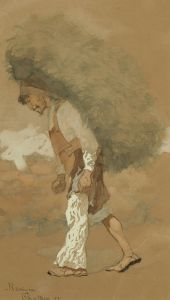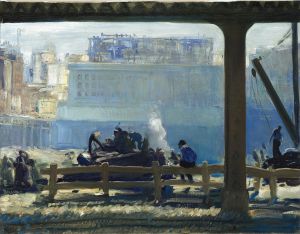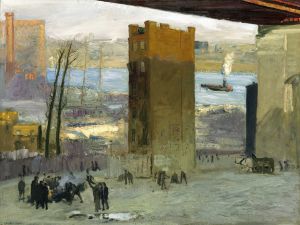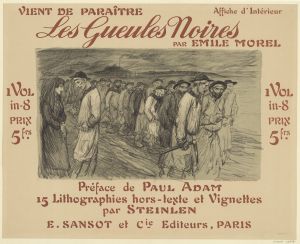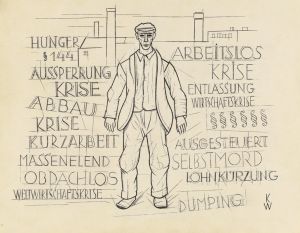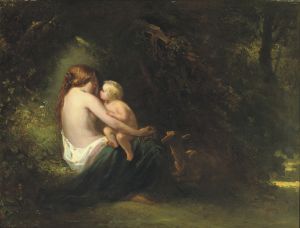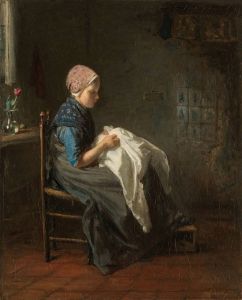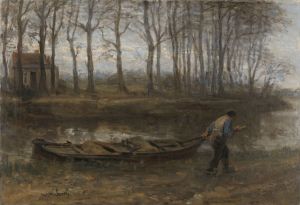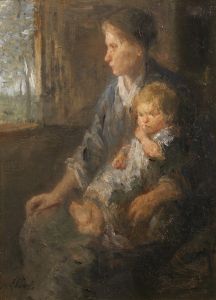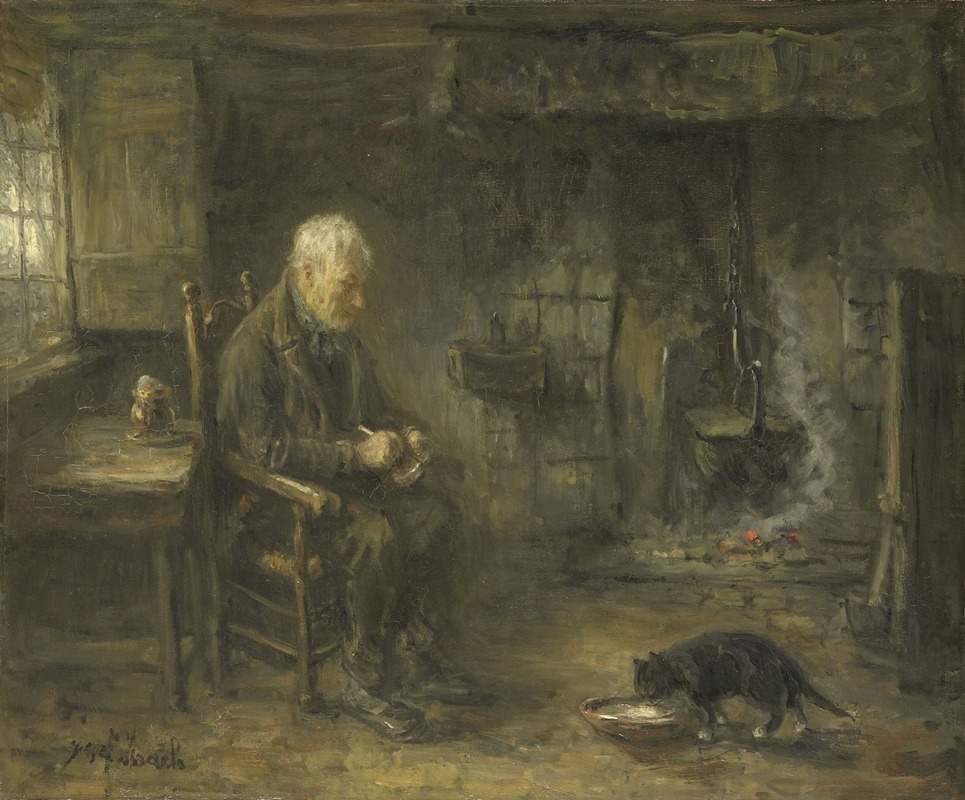
Interior of a Peasant Hut
A hand-painted replica of Jozef Israëls’s masterpiece Interior of a Peasant Hut, meticulously crafted by professional artists to capture the true essence of the original. Each piece is created with museum-quality canvas and rare mineral pigments, carefully painted by experienced artists with delicate brushstrokes and rich, layered colors to perfectly recreate the texture of the original artwork. Unlike machine-printed reproductions, this hand-painted version brings the painting to life, infused with the artist’s emotions and skill in every stroke. Whether for personal collection or home decoration, it instantly elevates the artistic atmosphere of any space.
"Interior of a Peasant Hut" is a notable painting by the Dutch artist Jozef Israëls, who was a leading figure in the Hague School, a group of artists known for their realistic depictions of rural life in the Netherlands during the late 19th century. Israëls, born in 1824 in Groningen, Netherlands, became one of the most influential Dutch painters of his time, often compared to the French realist painter Jean-François Millet.
The painting "Interior of a Peasant Hut" exemplifies Israëls' focus on the everyday lives of the rural poor, a recurring theme in his work. This piece captures the humble and austere living conditions of peasants, reflecting the artist's empathy and deep understanding of their struggles. Israëls was known for his ability to convey emotion and narrative through his use of light, shadow, and composition, and this painting is no exception.
In "Interior of a Peasant Hut," Israëls employs a muted color palette, dominated by earthy tones, which enhances the somber and contemplative mood of the scene. The interior depicted is sparse, with simple furnishings that underscore the modesty of the peasant lifestyle. Israëls' attention to detail is evident in the textures of the wooden beams, the roughness of the walls, and the worn surfaces of the furniture, all of which contribute to the authenticity of the setting.
The composition of the painting draws the viewer's eye towards the central figures, typically a peasant family engaged in their daily activities. Israëls often portrayed his subjects with dignity and respect, highlighting their resilience and humanity despite their hardships. The figures are rendered with a softness that suggests both physical and emotional warmth, inviting the viewer to empathize with their situation.
Israëls' work was deeply influenced by his personal experiences and observations of rural life. He spent time in the fishing village of Zandvoort, where he closely observed the lives of the local inhabitants. This direct engagement with his subjects allowed him to depict their lives with authenticity and sensitivity, qualities that are evident in "Interior of a Peasant Hut."
The painting is also notable for its use of light, a hallmark of Israëls' style. He often employed chiaroscuro, the contrast between light and dark, to create depth and focus within his compositions. In this work, light streams in through a window or open door, illuminating the interior and casting gentle shadows that add to the realism and emotional impact of the scene.
Jozef Israëls' contributions to art were widely recognized during his lifetime, and he received numerous accolades for his work. His paintings were exhibited internationally, and he was celebrated for his ability to capture the essence of rural life with compassion and insight. "Interior of a Peasant Hut" remains an important example of his oeuvre, reflecting both his technical skill and his commitment to portraying the lives of ordinary people with dignity and respect.
Today, Israëls' work continues to be appreciated for its historical significance and artistic merit. His paintings are held in major museums and collections around the world, where they continue to inspire and resonate with audiences. "Interior of a Peasant Hut" stands as a testament to Israëls' enduring legacy as a master of realist painting and a compassionate observer of human life.





